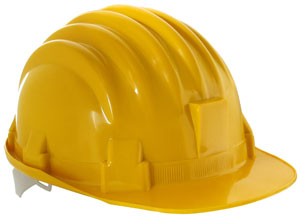 Every warehouse in America has required safety regulations. OSHA works continuously to improve working conditions for employees. However, OSHA won’t be able to prevent every injury from occurring in your warehouse. Every material handling organization must take it upon themselves to implement and enforce safety regulations.
Every warehouse in America has required safety regulations. OSHA works continuously to improve working conditions for employees. However, OSHA won’t be able to prevent every injury from occurring in your warehouse. Every material handling organization must take it upon themselves to implement and enforce safety regulations.
An excellent starting point for developing your own safety guideline is by adopting the 5S system. Using t5S combined with a checklist will help you with the steps needed to provide your employees with a safer workplace.
Here are three main points of interest when it comes to warehouse safety. Below each category is a list of specific factors that every warehouse needs to pay special attention to. Use this warehouse safety checklist to see if your your warehouse practices each of these vital factors.
Basic Warehouse Safety and Ergonomics
Consistent fatigue can turn into serious permanent injury. The most reported injuries due to fatigue are related to the feet and the back. These are also the most preventable injuries in the warehouse. Repetitive motions will alter the way your muscles move and contract. This can lead to numerous difficulties such as bad posture and carpal tunnel syndrome. Also, proper lifting techniques are absolutely imperative for every employee in the warehouse.
Does your warehouse emphasize each of the following safety factors?
- Footwear (Steel Toe Boots)
- Ergonomic Floor Mats
- Gloves
- Protective Eyewear
- Proper Lifting Techniques
- Hydration
Proper Warehouse Safety Training
The most critical part of warehouse safety is making sure your employees know and implement proper safety procedures. Safety training doesn’t have to be a dull experience. Don’t just ramble rules and regulations to your employees. Setting up scenarios in which a warehouse worker would need to make proper safety decisions is an excellent practice which would increase hands-on safety training experience.
Make sure your warehouse employees are properly trained in each of the following areas:
- Proper Forklift Safety
- Machine & Equipment Maintenance
- Proper Exit Strategies During Emergencies (Fire, Power Outage, Tornado)
- Clearly Marked Paths
- Warehouse Safety Signs
Warehouse Hazards
Many warehouse accidents are avoidable. Injuries in warehouses are inevitable, but reducing the number of hazards in a workplace is the best step in the right direction to significantly reducing injuries. Make yourself aware of the clear signs of a dangerous situation. Frayed wires and slippery floors are two common signs of disaster.
Examine your warehouse for the following hazards and replace them accordingly:
- Proper Lighting
- Clean Working Environment
- Broken or Frayed Wires (Extension Cords, Outlets)
- Ventilation
- Securely Stacked Materials
- Guardrails and Safety Gates
Teaching your employees how to properly identify and report hazards is also very important.
This warehouse safety checklist should be a reminder to encourage consistent safety awareness. Frequently review this list and thoroughly inspect each category in detail. Every factor in this checklist could be responsible for serious injury which could significantly reduce warehouse efficiency.
Check out our blog often for more tips on running a safer and more efficient warehouse!

